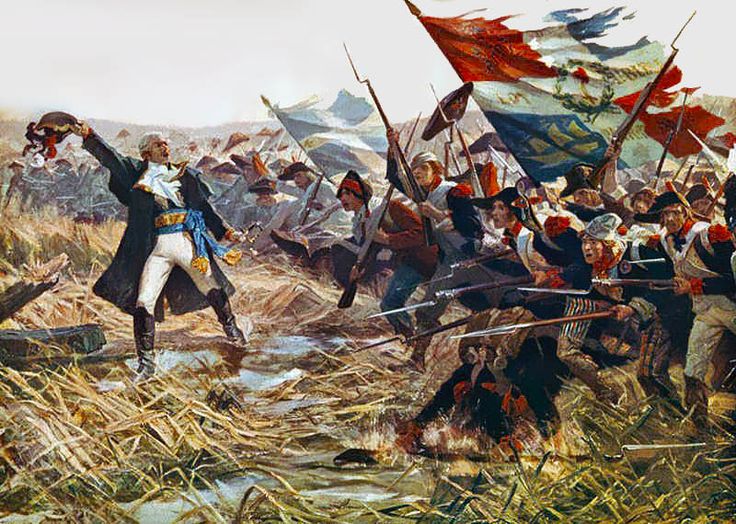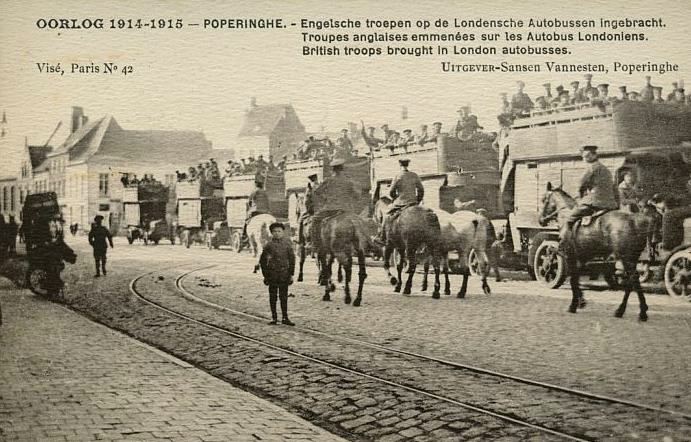|
Battle Of Hondschoote
The Battle of Hondschoote took place during the Flanders Campaign of the Campaigns of 1793 in the French Revolutionary Wars, Campaign of 1793 in the French Revolutionary Wars. It was fought during operations surrounding the Siege of Dunkirk (1793), siege of Dunkirk between 6 and 8 September 1793 at Hondschoote, Nord (département), Nord, French First Republic, France, and resulted in a French victory under General Jean Nicolas Houchard and General Jean-Baptiste Jourdan against the command of Heinrich Wilhelm von Freytag, Marshal Freytag, part of the Anglo-Hanoverian corps of the Prince Frederick, Duke of York and Albany, Duke of York. Background By August 1793, the Coalition Army under command of the Austrian Prince Josias of Saxe-Coburg-Saalfeld, Prince of Coburg had taken Condé-sur-l'Escaut, Condé, Valenciennes, and Le Cateau-Cambrésis, Le Cateau in Northern France. The Allies planned to next besiege Cambrai, however the British government ordered the Prince Frederick Aug ... [...More Info...] [...Related Items...] OR: [Wikipedia] [Google] [Baidu] |
Flanders Campaign
The Flanders Campaign (or Campaign in the Low Countries) was conducted from 20 April 1792 to 7 June 1795 during the first years of the War of the First Coalition. A coalition of states representing the Ancien Régime in Western Europe – Austria (including the Southern Netherlands), Prussia, Great Britain, the Dutch Republic (the Northern Netherlands), Hanover and Hesse-Kassel – mobilised military forces along all the French frontiers, with the intention to invade Revolutionary France and end the French First Republic. The radicalised French revolutionaries, who broke the Catholic Church's power (1790), abolished the monarchy (1792) and even executed the deposed king Louis XVI of France (1793), vied to spread the Revolution beyond France's borders, by violent means if necessary. A quick French success in the Battle of Jemappes in November 1792 was followed by a major Coalition victory at Neerwinden in March 1793. After this initial stage, the largest of these forces ass ... [...More Info...] [...Related Items...] OR: [Wikipedia] [Google] [Baidu] |
Condé-sur-l'Escaut
Condé-sur-l'Escaut (, literally ''Condé on the Escaut''; pcd, Condé-su-l'Escaut) is a commune of the Nord department in northern France. It lies on the border with Belgium. The population as of 1999 was 10,527. Residents of the area are known as Condéens or Condéennes. The Mayor of Condé-sur-l'Escaut is Gregory Lelong (2015). Geography Condé-sur-l'Escaut is northeast of Valenciennes, from Lille, and from Brussels, Belgium. It is situated at the confluence of the Haine and Scheldt rivers. The region is noted for its coal mines, resources which made it a strategic objective in both world wars. History The name comes from a Celtic word, "Condate", meaning "confluence", referring to the two rivers. A Romanised form of the word, Condatum, was in use during the Roman period, and "Condé" was in use by the 14th century. The current name, Condé-sur-l'Escaut, dates from 1886. Being at the confluence of two rivers, the site has had military importance since before Roman ti ... [...More Info...] [...Related Items...] OR: [Wikipedia] [Google] [Baidu] |
Wormhout
Wormhout (; before 1975: ''Wormhoudt''; vls, Wormout) is a commune in the Nord department in northern France. Several people in Wormhout still speak West Flemish, a local dialect of Dutch and the traditional language of the region, while French-speakers form a majority, due to centuries of French political and cultural influence. The town's name is of Germanic origin, meaning "Wormwood." See "Origine et histoire" under "Renseignements". Neighbouring towns and villages : * to the south-west, separated by river * |
Bergues
Bergues (; nl, Sint-Winoksbergen; vls, Bergn) is a commune in the Nord department in northern France. It is situated to the south of Dunkirk and from the Belgian border. Locally it is referred to as "the other Bruges in Flanders". Bergues is a setting for the 2008 movie '' Welcome to the Sticks'' (Original French title: ''Bienvenue chez les Ch'tis''). History The town's name derives from the Dutch ''groene berg'', which means "green hill". According to legend, St Winnoc, son of the Breton king, retired to Groenberg, a hill on the edge of the coastal marshes (see Marcae below). His establishment soon developed into a small monastery. In 882, when the Normans began their incursions, the Flanders count Baudouin II built primitive fortifications. Later, about 1022, count Baudouin IV built Saint-Winnoc church and interred the relics of St Winnoc there. This church formed the basis of an abbey. Trade was aided by proximity to the sea, which had not yet receded to Dunkirk, a ... [...More Info...] [...Related Items...] OR: [Wikipedia] [Google] [Baidu] |
Rexpoëde
Rexpoëde (; from Flemish; ''Rekspoede'' in modern Dutch spelling) is a commune in the Nord department in northern France. It is southeast of Dunkirk. Population Heraldry See also *Communes of the Nord department The following is a list of the 648 communes of the Nord department of the French Republic. The communes cooperate in the following intercommunalities (as of 2020):Communes of Nord (French department) Nord communes articles needing translation from French Wikipedia [...More Info...] [...Related Items...] OR: [Wikipedia] [Google] [Baidu] |
Oost-Cappel
Oost-Cappel is a Communes of France, commune in the Nord (French department), Nord Departments of France, department in northern France on the Belgium, Belgian border. Heraldry See also *Communes of the Nord department References Communes of Nord (French department), Oostcappel French Flanders {{Nord-geo-stub ... [...More Info...] [...Related Items...] OR: [Wikipedia] [Google] [Baidu] |
Poperinge
Poperinge (; french: Poperinghe, ; vls, Poperienge) is a city and municipality located in the Belgian province of West Flanders, Flemish Region, and has a history going back to medieval times. The municipality comprises the town of Poperinge proper and surrounding villages. The area is famous for its hops and lace. The town Poperinge is situated about 13 km (8 miles) to the west of Ypres (Ieper). The region is famous for growing hops and furnishes 80% of Belgian production. The town is home to the national hop museum and is called "hops city", ''hoppe stad'' in Dutch, a play on ''hoofd stad'', the word for capital. A triennial hop festival and parade is held in the month of September. The local brew is known as Hommel (which means hops in the West Flanders dialect). The carillon in the tower of the town's oldest church, Sint-Bertinuskerk, was noted as one of the most beautiful in Flanders in mediaeval times. It was destroyed during wartime in 1677 and restored in 1781. Poper ... [...More Info...] [...Related Items...] OR: [Wikipedia] [Google] [Baidu] |
Rosendaël
Rosendaël ( nl, Rozendaal, vls, Rozendoale, French Flemish: ; meaning "rose valley") is a former commune in the Nord department in northern France. In 1971 it was merged into Dunkirk. It currently has 18,272 inhabitants (an almost ten-fold increase since 1825) in an area of 3.97 km2. Heraldry Rosendaël also has its own flag, ''Barry of 6 gules and vert'' File:Coat of Arms of Rosendaël.svg, Grandes armes de Rosendaël. File:Drapeau de la commune de Rosendaël (59) Nord-France.svg, Flag of Rosendaël File:DrapeauRosendael.JPG, Flag of Rosendaëlsur dam See also *Communes of the Nord department *Roosendael Abbey in Antwerp, Belgium *Roosendaal, city in North Brabant, Netherlands * Rozendaal, South Holland, town in the Netherlands *Rozendaal, town in Gelderland, Netherlands *Jack Rosendaal Jacobus ("Jack") Cornelius Rosendaal (born September 12, 1973 in Apeldoorn, Gelderland) is a retired decathlete from the Netherlands, who represented his native country at the 1996 S ... [...More Info...] [...Related Items...] OR: [Wikipedia] [Google] [Baidu] |
Menen
Menen (; french: Menin ; vls, Mêenn or ) is a city and municipality located in the Belgian province of West Flanders. The municipality comprises the city of Menen proper and the towns of Lauwe and Rekkem. The city is situated on the French/Belgian border. On January 1, 2006, Menen had a total population of 32,413. The total area is 33.07 km² which gives a population density of 980 inhabitants per km². The city of Menen gives its name to the Menin Gate in Ypres, which is a monument to those killed in World War I. The gate is so called as the road from that gate is the road to Menen. The town hall of Menen, with its large belfry, was inscribed on the UNESCO World Heritage List in 1999 as part of the Belfries of Belgium and France site, because of its civic importance and architecture. History Menen's position near the French border led to many sieges in the history of the city. There were as many as 22 sieges between 1579 and 1830. The city was part of France between 1 ... [...More Info...] [...Related Items...] OR: [Wikipedia] [Google] [Baidu] |
Joseph Souham
Joseph, comte Souham (30 April 1760 – 28 April 1837) was a French general who fought in the French Revolutionary Wars and the Napoleonic Wars. He was born at Lubersac and died at Versailles. After long service in the French Royal Army, he was elected to lead a volunteer battalion in 1792 during the French Revolution. He was promoted to general of division in September 1793 after playing a prominent role in the defense of Dunkirk. In May 1794 with his commander absent, he took temporary command of the ''Army of the North'' and defeated the Coalition army at Tourcoing. He led the covering forces at the siege of Ypres and participated in the successful invasion of the Dutch Republic. He spent many years in occupation duties in Holland and then his career suffered because of his association with Pichegru and Moreau. Starting in 1809 he was employed in Spain during the Peninsular War, winning the Battle of Vich where he was wounded. When he was in army command again, he forced We ... [...More Info...] [...Related Items...] OR: [Wikipedia] [Google] [Baidu] |
Dunkirk
Dunkirk (french: Dunkerque ; vls, label=French Flemish, Duunkerke; nl, Duinkerke(n) ; , ;) is a commune in the department of Nord in northern France.Commune de Dunkerque (59183) INSEE It lies from the border. It has the third-largest French harbour. The population of the commune in 2019 was 86,279. Etymology and language use The name of Dunkirk derives from '' or ' |
Prince Frederick Augustus, Duke Of York And Albany
Prince Frederick, Duke of York and Albany (Frederick Augustus; 16 August 1763 – 5 January 1827) was the second son of George III, King of the United Kingdom and Hanover, and his consort Charlotte of Mecklenburg-Strelitz. A soldier by profession, from 1764 to 1803 he was Prince-Bishop of Osnabrück in the Holy Roman Empire. From the death of his father in 1820 until his own death in 1827, he was the heir presumptive to his elder brother, George IV, in both the United Kingdom of Great Britain and Ireland and the Kingdom of Hanover. Frederick was thrust into the British Army at a very early age and was appointed to high command at the age of thirty, when he was given command of a notoriously ineffectual campaign during the War of the First Coalition, a continental war following the French Revolution. Later, as Commander-in-Chief during the Napoleonic Wars, he oversaw the reorganisation of the British Army, establishing vital structural, administrative and recruiting reformsGlov ... [...More Info...] [...Related Items...] OR: [Wikipedia] [Google] [Baidu] |





